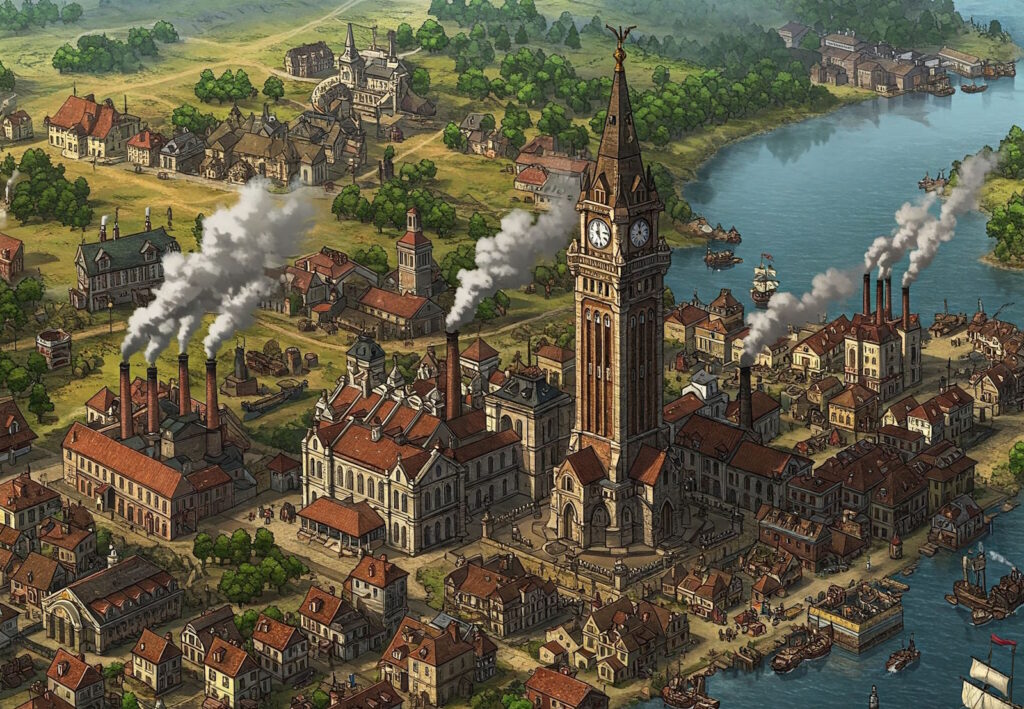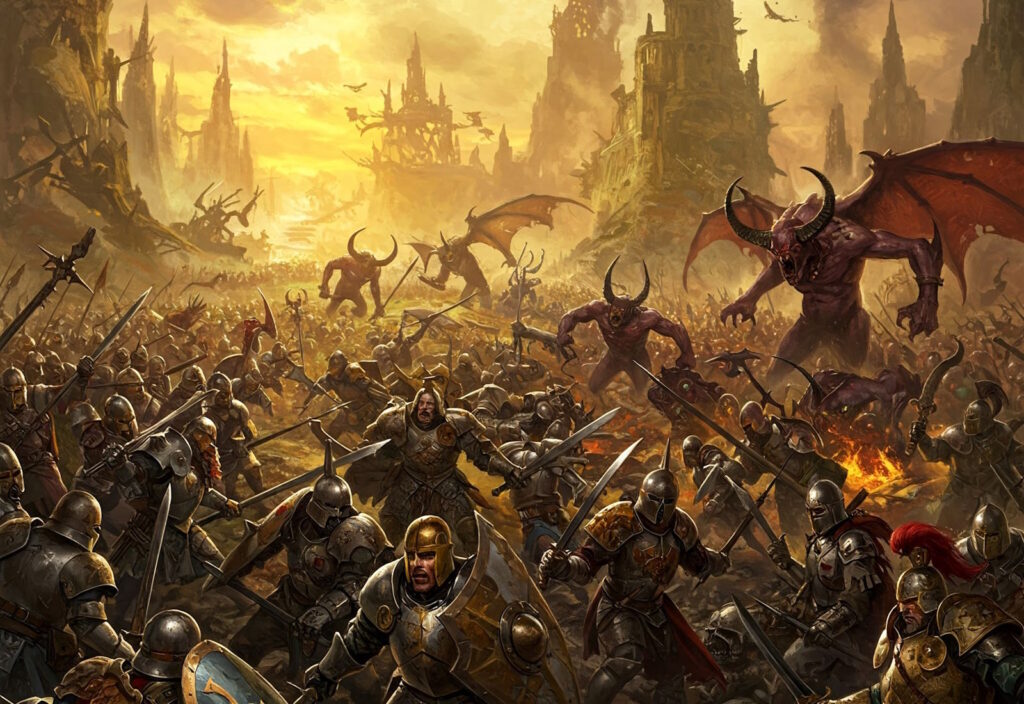Overview of Diablo II: Resurrected
Diablo II: Resurrected, released on September 23, 2021, serves as a modern remaster of the iconic 2000 action role-playing game Diablo II. Developed by Blizzard Entertainment, this updated version includes enhancements in graphics, audio, and quality of life features while retaining the core gameplay mechanics that made the original a landmark title in its genre. The development of this remaster was fueled by a growing interest in classic games and a desire to reintroduce a beloved experience to both old fans and newcomers alike.
The significance of Diablo II in the gaming industry lies in its revolutionary gameplay, which set forth a template for action RPGs that continues to influence contemporary games. Its complex character builds, compelling narrative, and expansive world encouraged a level of player immersion that was relatively rare at the time of its initial release. Diablo II also fostered a robust online multiplayer experience through Battle.net, which facilitated cooperative gameplay as well as Player vs. Player (PvP) engagements. These features contributed to the game’s lasting legacy and solidified its reputation as one of the most acclaimed entries in the genre.
In bringing forward Diablo II: Resurrected, Blizzard aimed to not only preserve the essence of the original game but also to enhance it with modern technological advances. The remaster boasts fully updated 3D graphics while allowing players to switch back to the original graphics with a press of a button, creating a nostalgic connection for veterans of the series. By addressing some of the identified shortcomings of the original game, such as modern gameplay conveniences, Blizzard has crafted an experience intended to captivate both loyal players and new audiences. As we explore the current resonance of this remaster among today’s gamers, it is essential to reflect on the historical impact and ongoing relevance of Diablo II in the action RPG landscape.
Visual and Audio Enhancements
Diablo II: Resurrected brings substantial visual and audio enhancements that breathe new life into the classic title. The remastered version elevates the graphics through high-definition textures, significantly improving character models and environment details. The revitalized visuals preserve the original aesthetic while offering a more immersive experience for both longtime fans and newcomers. When comparing the original game to its remastered iteration, players will notice a striking difference in clarity and depth. The updated graphics engine allows for dynamic lighting and smoother animations, making the game visually appealing without straying from its roots.
In addition to the enhanced graphics, the sound design has also received a significant upgrade. The remastered version features re-recorded audio and improved sound effects, which add a layer of richness to the gameplay experience. The iconic soundtrack from the original Diablo II remains, but with higher fidelity, allowing the melodies to resonate with greater intensity. Sound effects that players have come to associate with different characters and actions have been meticulously remade, creating a more engaging auditory atmosphere throughout the game.
Furthermore, the option to toggle between the remastered and original graphics is a notable feature. This allows players to appreciate the evolution of the game’s design while still accessing nostalgia. The seamless transition between visual styles emphasizes how far technology has advanced, without losing the essence that made Diablo II a standout title in the first place. The combined audiovisual enhancements not only improve the overall aesthetic appeal but also contribute significantly to the game’s lasting charm, ensuring that both die-hard enthusiasts and new players can enjoy Diablo II: Resurrected in an enriched form.
Gameplay Mechanics: Nostalgia vs. Modern Standards
Diablo II: Resurrected provides a unique blend of nostalgic gameplay mechanics while attempting to incorporate elements that resonate with modern gaming audiences. At its core, the game retains the same tight gameplay loop that captivated players two decades ago. Engaging in quests, battling hordes of demons, and collecting new loot creates an immersive experience that remains appealing. However, compared to contemporary gaming standards, such as streamlined tutorials and onboarding processes, the initial learning curve of Diablo II can be daunting for newcomers.
The character classes in Diablo II are notably diverse, encompassing everything from the Sorceress to the Barbarian, each offering distinct play styles and abilities. Players can customize their experience through intricate skill trees, encouraging a sense of personalization that is often absent in modern titles. However, with an increasing focus on kinetic and visually appealing gameplay in current games, some players may find Diablo II’s slower-paced mechanics challenging to adapt to. These considerations raise questions about whether its classic character development retains the same allure for today’s audience.
Inventory management is another fundamental mechanic that distinguishes Diablo II: Resurrected from more recent games. Though the intricate inventory system adds a layer of strategy in item organization, it also may feel cumbersome for those accustomed to more intuitive systems in newer titles. The game’s design requires players to make decisions on their inventory space, which can be interpreted as either a nostalgic nod to the genre’s roots or a frustrating barrier to seamless gameplay. Nevertheless, these mechanics provide a depth that many players cherish, fostering a sense of accomplishment when navigating the game’s challenges.
As we evaluate the gameplay mechanics of Diablo II: Resurrected, the juxtaposition of nostalgic elements with modern standards reveals a nuanced perspective. These enduring mechanics might resonate differently with players depending on their gaming backgrounds, leading to varying opinions on the game’s relevancy today.
Community and Multiplayer Experience
Diablo II: Resurrected offers players a rich and engaging community experience that pays homage to the original game while adapting to modern multiplayer expectations. The online co-op mode remains a significant draw, allowing users to form parties with friends or strangers to tackle the diverse challenges the game presents. This cooperative aspect fosters collaboration, as players can combine their unique character builds to overcome formidable foes and delve into the vast world of Sanctuary together. The multiplayer experience retains its classic charm, offering both nostalgia and innovation for new and returning players alike.
One of the standout features of the current multiplayer interface is the integrated social systems that Blizzard has introduced. Players can easily connect through in-game friends lists, clans, and communities, encouraging social interactions that were somewhat more limited in the original release. These enhancements strengthen the sense of belonging within the Diablo II community, promoting communication and collaboration. Furthermore, the presence of the game’s online forums and social media groups allows players to share strategies, trade items, and discuss their experiences, enriching the overall engagement with the game.
In addition to cooperative gameplay, player interactions in Diablo II: Resurrected have been meticulously designed to minimize toxicity and enhance user experience. Blizzard has implemented features aimed at reducing harassment and fostering a positive playing environment. Features such as blocking players and reporting systems ensure that the community can thrive while maintaining a welcoming atmosphere. Compared to modern multiplayer titles, the balance between competition and camaraderie in Diablo II: Resurrected’s community holds up remarkably well, continuing to attract players who appreciate both the gameplay and the social components of gaming.
Endgame Content and Replayability
Diablo II: Resurrected has successfully captured the essence of its predecessor while introducing various enhancements, particularly in terms of endgame content and replayability. Once players complete the main campaign, they are greeted with a plethora of opportunities that encourage continued engagement with the game. This includes multiple difficulty levels, ladder seasons, and a diverse range of loot incentives that collectively ensure the longevity of player interest.
The implementation of ladder seasons is a significant feature, offering a fresh start where players can create new characters to compete for unique rewards. These seasons not only allow for exciting leaderboard rankings but also rejuvenate the gameplay experience by introducing seasonal challenges and varying gameplay rules. Such seasonal content ensures that both veteran players returning to the game and newcomers alike have something to strive for, thereby facilitating repeated engagement over time.
Moreover, the game’s tiered difficulty settings—Normal, Nightmare, and Hell—further contribute to its replayability. Each level presents not just increased challenges but also the opportunity to acquire superior gear and unique items. This progression through the difficulties encourages players to experiment with different character builds and strategies, further enhancing the game’s depth. The presence of powerful endgame bosses, such as the Uber bosses, adds an additional layer of challenge and collectible rewards that keep the adrenaline high and players returning for more.
Finally, the emphasis on unique loot opportunities significantly enriches the post-campaign experience. Players consistently seek after rare and legendary items, which are critical for character advancement and optimization. This dynamic creates an engaging loop where players are motivated to refine their skills and enhance their characters, thereby solidifying Diablo II: Resurrected’s status as a timeless classic in the action RPG genre, with endgame content that holds up incredibly well in contemporary gaming culture.
New Features and Quality of Life Improvements
Diablo II: Resurrected has implemented several new features and quality of life improvements that significantly enhance the gaming experience for both returning players and newcomers alike. One of the standout additions is the shared stash feature, which allows players to conveniently store and transfer items between characters. This feature mitigates the frustrations that players faced in the original game, where inventory management was often a cumbersome task. The ability to access a central storage area promotes a more fluid gaming experience, encouraging players to explore various character builds without the hassle of constantly juggling items.
Furthermore, the user interface has undergone notable tweaks, designed to align more closely with contemporary gaming expectations. Enhanced visuals and revamped menus have improved navigational ease, making it simpler for players to manage their inventories and access critical game information quickly. These UI updates, while preserving the classic aesthetic, offer a modern touch that can be particularly appealing to players who are accustomed to the polished interfaces found in newer titles. The implementation of mouse wheel support for inventory scrolling is another example, highlighting how small adjustments can streamline gameplay effectively.
Additionally, controller support represents a significant step forward in accessibility. This feature allows players to utilize gamepads, making Diablo II: Resurrected more flexible in terms of how it can be played, especially for those who prefer console gaming. The controls are responsive and intuitive, catering to a broad audience. This improvement not only appeals to a new demographic of players but also potentially enhances the longevity of the game by accommodating various play styles.
Ultimately, these quality of life improvements reflect a sincere effort to refine and modernize the classic game without losing its core identity. The enhancements resonate well with the community, simplifying gameplay mechanics and adding layers of convenience that promote player engagement and enjoyment in this revitalized classic.
Criticisms and Areas for Improvement
Since its launch, Diablo II: Resurrected has garnered a mixture of appreciation and criticism from both avid fans and new players. While many have celebrated the nostalgic revival of this classic action RPG, certain aspects of the game have drawn scrutiny. One of the recurring concerns involves bugs and technical issues that can disrupt gameplay. Various players have reported glitches ranging from minor visual errors to significant server connectivity problems. These bugs can detract from the immersive experience that many players seek, with some instances leading to frustration during crucial moments of gameplay.
Another point of criticism pertains to balance issues within the game’s mechanics. While the original Diablo II featured a complex system of character classes and skills, some players have raised concerns that the refreshed version does not adequately address historical imbalances that existed in the original title. Characters like the Sorceress and Paladin often dominate playtests, leading to a feeling among some players that certain classes may offer less versatility or competitiveness during multiplayer sessions. This perceived imbalance could impact the replay value for those who prefer diverse character builds and encounters.
Moreover, critics have noted the absence of certain quality-of-life features commonly found in modern gaming experiences. The lack of an integrated trading system, streamlined inventory management, and enhanced user interface options can pose challenges, especially for newcomers unfamiliar with the franchise. These elements, while not necessarily detrimental, may prevent some players from fully engaging with the game. Collectively, these criticisms reflect a broader conversation around whether Diablo II: Resurrected effectively meets the expectations of a contemporary audience. Ultimately, these areas for improvement warrant consideration as they could influence the game’s longevity and player satisfaction.
Comparative Analysis with Modern Action RPGs
When evaluating the place of Diablo II: Resurrected in the modern gaming landscape, it is essential to juxtapose it with contemporary action RPGs such as The Witcher 3: Wild Hunt, Dark Souls, and Monster Hunter: World. Each of these titles offers a unique interpretation of the genre, characterized by advanced storytelling techniques, graphical fidelity, and innovative gameplay mechanics that may challenge Diablo II’s enduring appeal.
One aspect where modern action RPGs excel is in storytelling. Titles like The Witcher 3 integrate deep narrative arcs and character development through dynamic choices, allowing players to influence outcomes substantially. In contrast, while Diablo II’s narrative is engaging and lore-rich, it largely remains a classic questing framework with a less flexible narrative structure. The quest system in Diablo II is straightforward, focusing on combat and loot, which, although satisfying, can feel somewhat dated in comparison to more contemporary narrative-driven experiences.
Graphically, Diablo II: Resurrected, even with its remastered visuals, cannot match the breathtaking environments and character models seen in more recent action RPGs. From the lush landscapes in The Witcher 3 to the intricate design of Dark Souls’ haunting world, modern titles utilize advanced graphics engines to create immersive experiences that draw players into their vivid worlds. Diablo II’s aesthetic, while nostalgic, lacks this level of graphical sophistication, relying on its charm rather than cutting-edge technology.
Gameplay innovations also mark a dividing line. Action RPGs like Monster Hunter: World incorporate cooperative mechanics and expansive ecosystems that enhance player interaction and engagement. While Diablo II also emphasizes multiplayer aspects, it lacks the depth and interactivity present in these newer titles. Therefore, while Diablo II: Resurrected remains a benchmark for action RPGs, its standing in a landscape increasingly dominated by rich narratives, high-quality graphics, and innovative gameplay can be seen as both a testament to its legacy and a challenge for its continued relevance.
Conclusion: Is Diablo II: Resurrected Worth Playing Today?
Diablo II: Resurrected holds a significant place in the gaming community, celebrated not only for its nostalgic value but also for its enduring gameplay mechanics. As discussed throughout this blog post, the remastered edition presents a delicate blend of the original game’s classic elements and enhanced visual fidelity, successfully catering to both veteran players and newcomers alike. Its strengths primarily lie in the refined graphics and audio experience, which provide a more immersive environment for players to traverse the dark realms of Sanctuary. The updated user interface and online capabilities further enhance the gaming experience, facilitating a seamless connection among players.
However, while the game shines in many areas, certain weaknesses are evident. For instance, players may encounter issues such as balance concerns in character classes and some lingering bugs, which can detract from the overall enjoyment. Additionally, the gameplay may feel dated to some, particularly for those accustomed to modern gaming standards. The grind-heavy nature of the loot system and character progression can be a double-edged sword; it appeals to dedicated fans of the genre while potentially alienating those seeking a more streamlined experience.
Ultimately, whether Diablo II: Resurrected is worth playing today hinges on individual preferences. If you are a fan of classic action RPGs, this remastered version offers a faithful recreation of an iconic title that has withstood the test of time. Conversely, if your tastes lean towards contemporary game design with modern conveniences, you may find yourself less engaged. In conclusion, Diablo II: Resurrected serves as both a homage to its predecessor and a testament to the enduring legacy of the franchise, making it a worthwhile experience for players willing to explore its rich history.



